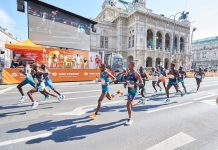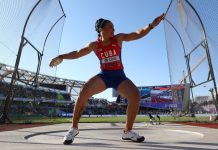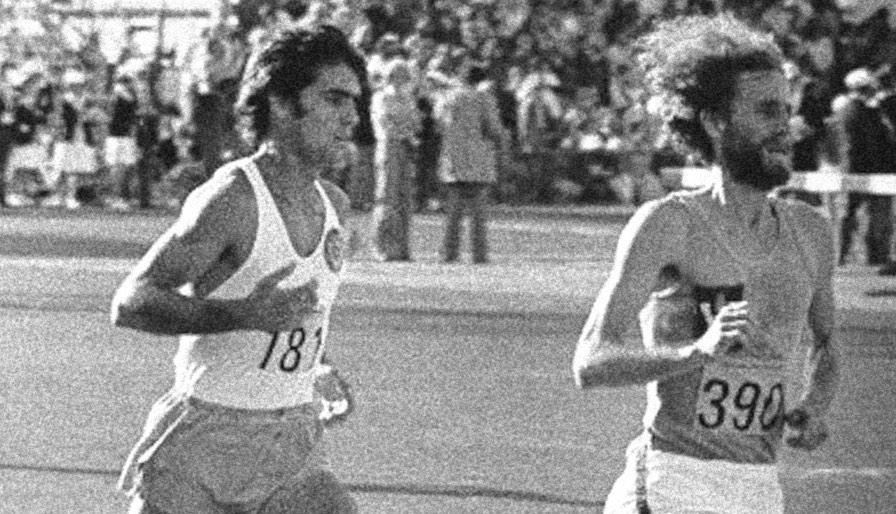The below interview is thanks to Neil MacDonald, who caught up with Chris Wardlaw in January 2002. With Neil’s permission, the interview has been restored so that today’s generation can appreciate and learn from one of Australia’s greatest ever coaches.
Neil MacDonald managed the Geelong Region Cross Country team from 2000-2007.
(Photos included by Runner’s Tribe )
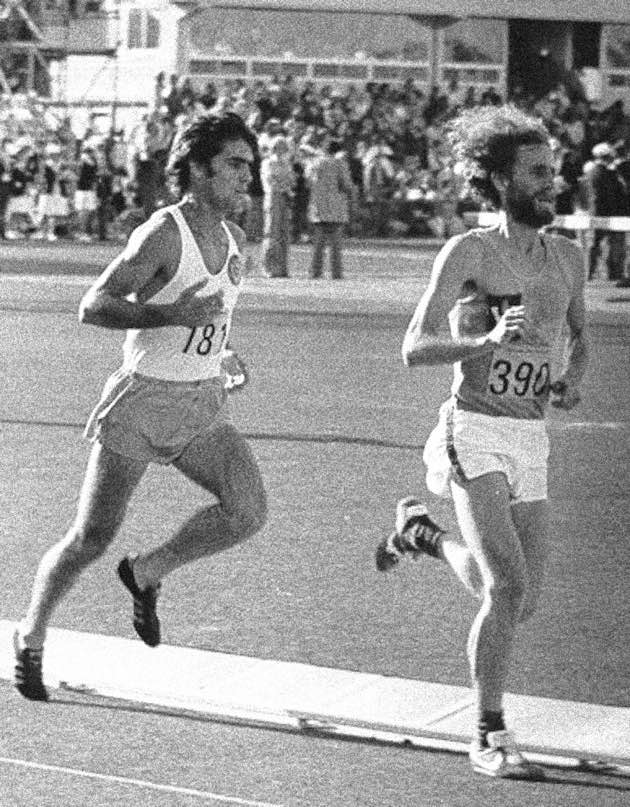
Chris “Rab” Wardlaw has done it all in athletics. Two time Olympian, coach to Steve Moneghetti and Kerryn McCann, Head Coach to the Australian Track and Field Team for the Sydney Olympics, the list goes on and on. No wonder he is looked upon as Australia’s ‘distance running guru’.
N.M. Chris, it’s the Christmas / New Year period and you’re at Falls Creek again. How many years have you been coming up here?
C.W. I first came up in 1969 / 70 so I think that makes 32 years all up.
N.M. Why Falls Creek?
C.W. Well, I reckon that it has three or four things going for it. One is that there is a touch of altitude although I think that only has a minor impact. Secondly, Falls Creek has a fantastic running environment, really quite difficult running actually that toughens people up. Thirdly, I like the village where you can create a positive group atmosphere. Also, at Falls Creek there’s not much else to do so the runners get a lot of rest up here. So overall, Falls Creek has a fantastic all-round training effect on athletes.
N.M. And athletes come from all over Australia, and the world, to train here. The Ray Boyd story certainly illustrates that.
C.W. I think Boydy’s story is just fantastic – all about doing everything possible to be the best athlete you can be. (Ed. Ray Boyd lives in Western Australia. A few years ago Ray was determined to spend his Christmas holidays training at Falls Creek so he caught an early morning flight from Perth to Melbourne, a train from Melbourne to Wangaratta, then a bus from Wangaratta to Mount Beauty. Unfortunately, he was stranded at Mount Beauty without transport so he walked (with all his gear) the last 30 kilometres uphill to Falls Creek – all so he would not miss the afternoon run at 5:30 pm.! Ray’s dedication paid off a few years later when he ran 2 hours 13.26 minutes, and a Sydney Olympic Games A Qualifier, at the 1999 Chicago Marathon!)
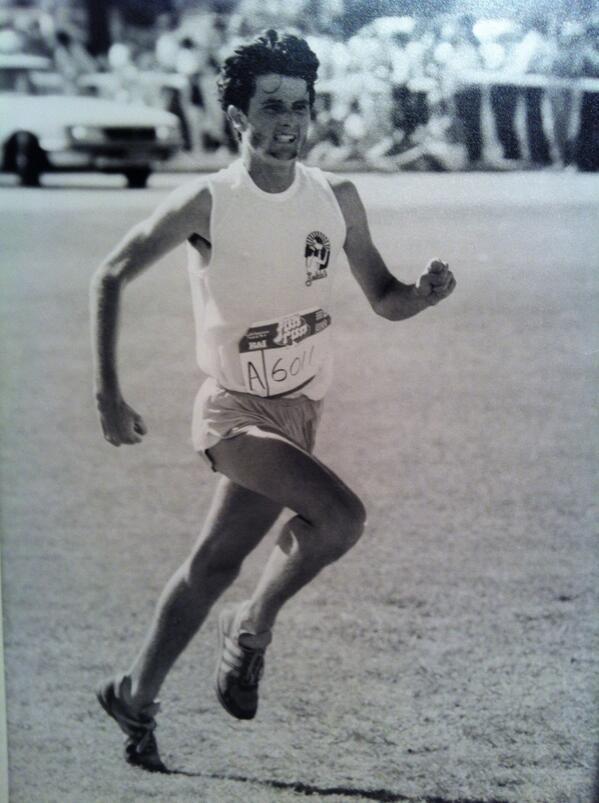
N.M. Initially, Falls Creek was used because Mexico City was given the 68 Olympics.
C.W. Yeah. Well, I think the first group came up here in 1965. John Kneen from Sandringham and Jim Langford from Western Australia were in that first group. (Ed. John Kneen claims that John Keenan from Coburg was one of the first to use Falls Creek as a long distance training venue). Then in 1968, Ralph Doubell and some of the University guys came here and we followed them up the following year.
N.M. It certainly worked well for Doubell. (Ed. Ralph Doubell was the last Australian male to win an Olympic Track Gold when he was victorious in the 800 metres at the Mexico City Olympics running 1:44.40, a World Record at the time and still the National Record.)
C.W. Yeah, but I’m not sure that he spent much time up here. But he was certainly one of the first up here to see what was available.
N.M. You would have noticed some changes to Falls Creek over the last 32 years?
C.W. It was certainly a lot more Spartan back then with everything having to be brought up the mountain with you. I remember how excited we were when it was discovered that milk could be purchased from the local hotel for an hour a day. Also, during summer we pretty much had the village to ourselves back then.
N.M. How did the sessions originate? Who has got claims on Fitzy’s Hut and Howman’s Gap and all the other sessions?
C.W. Well, I think the Fitzy’s Hut run was invented by a bloke named Bob Smith from St. Stephens who would be about 55 now – still a good veteran runner. At his best was a 1.48 runner over 800 metres. Howman’s Gap, I think myself and John Axsentieff first ran that a long time ago. Pretty Valley and many of the others just came about when a few of us looked at a map and thought, let’s try this course today. There’s a bit of history to all of the runs.
N.M. And Bogong – the first famous Mount Bogong run. An accidental legend was created there!
C.W. Yeah, it was. I was with a few Box Hill guys – Ross Haywood, Ian Jones, Brendan Layh and we thought it would be just a 20 minute run and it wasn’t! It was done one evening after running Spion Kopje that morning. Anyway, a couple of us thought we just had to get to the top regardless of how long it took. Eventuall, we made it up but then had to come back down “The Staircase” in the dark.
N.M. You must have been fearing for your life?
C.W. Yeah, it was quite dark and a very silly thing to do but once at the summit, we did not have much choice.
N.M. And now the distance runners use it more as a mental toughening exercise than an actual training session?
C.W. Yes, just to do it. Troopy is going to do it when he comes back in March. I encourage everyone to do it at least once just to see what it is like – it’s very, very tough!
N.M. Yes, you certainly look deep within yourself when you’re half way up and really struggling!
C.W. That’s right.
N.M. Some of the early legends of Australian distance running that have made the pilgrimage to Falls Creek, Gerard Barrett and Bill Scott for example. Your thoughts on them?
C.W. That’s right. Gerard spent a lot of time up here. Actually, he was forced to walk up the ‘grassy knoll’ the first time he ran Spion.
N.M. Gerard was a great talent who perhaps didn’t quite reach his potential?
C.W. Yeah, he was one of the best runners we’ve had, talent wise. In fact, he ended up being a pretty good runner and ran fast times for back then but he was also injured a lot and almost certainly didn’t reach the level he was capable of. Injuries just killed him!
N.M. Bill Scott, another top runner from the 70’s?
C.W. Actually, I saw Scottie yesterday.
N.M. Is he still teaching up this way?
C.W. Yeah, at the Bright P – 12. He’s the Assistant Principal. He used Falls Creek a lot. In fact, I reckon he ran Spion Kopje more than anyone. It was his key run. I remember he often ran the rugged 15 miler along the Spion Kopje ridge three times a week. He preferred it to Pretty Valley for the long run although I’m not sure why anyone would do it three times a week. However, he was a great runner.
N.M. And Tim O’Shaughnessy dubbed him “The Living Legend?
C.W. Yeah, he was extraordinary. He would disappear for ages, then pop up and do something remarkable. At one time we hadn’t seen him for maybe 18 months and he came out and ran 47 minutes around a 2km. loop for the old Victorian Marathon Club Two Bridges 16 km. Race. Even when he wasn’t around, everyone was wondering what he was up to.
N.M. The other day the Spion Kopje run was cancelled because of the blizzard. In your memory has another run ever been cancelled due to adverse conditions?
C.W. Yeah, we went out one year and got to the top of Mount Nelse and it was just too bad so we turned around.
N.M. Dangerous bad?
C.W. Yeah, dangerous bad. You don’t realise just how cold it’s getting, especially when you’re above the tree line, until it’s too late. A lot of people don’t realise just how dangerous it can be up here because the weather can change pretty quickly.
N.M. When I first ran Mount Bogong I was a little alarmed to see the monument about 3/4 of the way up to the hikers who died on the mountain when the weather suddenly turned for the worst. After seeing that, each dark cloud certainly took on greater significance.
C.W. At times we do treat the weather a bit arrogantly up here. However, at least everyone up here is fit.
N.M. I know Lynchy treats Mount Bogong with respect after he became lost on the way down. However, he did run a great 5000 metres in 13.31 not long after that.
C.W. He did. But there’s been a few guys lost – a guy from New South Wales by the name of Gary Brown was lost for about 10 hours, Adam Hoyle was another one. I’ve been lost with David Byrnes when the weather suddenly closed in. So Lynchy was certainly not the first.
N.M. When you started out, who were your heroes?
C.W. Brendan Foster. I just loved his attitude and the way he ran. Even the opening line from his book where he said that he wasn’t even the best runner in Gateshead. I just love that sort of thing. I also loved Viren. He had a wonderful distance runner’s rhythm and a build as good as any distance runner who has ever lived. He also had a brilliant tactical ability in that he was able to peak for the Olympics, and what other occasion is there after the Olympics? I had the pleasure of running with Viren for most of the 25 laps of the Montreal Olympics 10 000 metres heat and for the first half of the Olympic Final. His lightness of stride, rhythm and focus were captivating. Shorter was another favourite but really, Foster was the one. Brendan had the speed to sit and kick and could have won many races in this way. However, he preferred to win his races before the last lap. He’d throw in sub 60 second laps in the second third of a race to kill off the opposition. He was prepared to race the distance – ‘the athlete’s athlete’.
N.M. I understand that back in the 70’s you and a group of athletes basically said, “let’s not worry about results so much, let’s just have a red hot go and see if we can lift the standard of Australian running”.
C.W. Yes, we certainly ran aggressively, except for Fitzy (Dave Fitzsimons, 1976 Olympic 10 000 metre finalist) who liked to sit on us. Scottie, more than anybody, was the one leading the way. Max Little and Gerard Barrett were two others who pushed the pace. Steve Austin, to some extent was aggressive. We were in the doldrums post Clarke so to have a group like that helped all our times come down and helped lift the standard of Australian distance running.
N.M. And Deeks arrived around this time. Was he a hero of yours?
C.W. He was great but I don’t really see him as a hero mainly because I was trying to beat the b#@^&*%. But he was a fantastic athlete. He also was almost ‘bullet proof’ in that he never seemed to get injured but I think that he was the one who benefited from a really good group around him at the time. He had to beat some pretty good local athletes and because of that went onto become the best in the world. Butvhe was well coached – Pat Clohessy was a great coach. He was also a great trainer – people tend to under- estimate that.
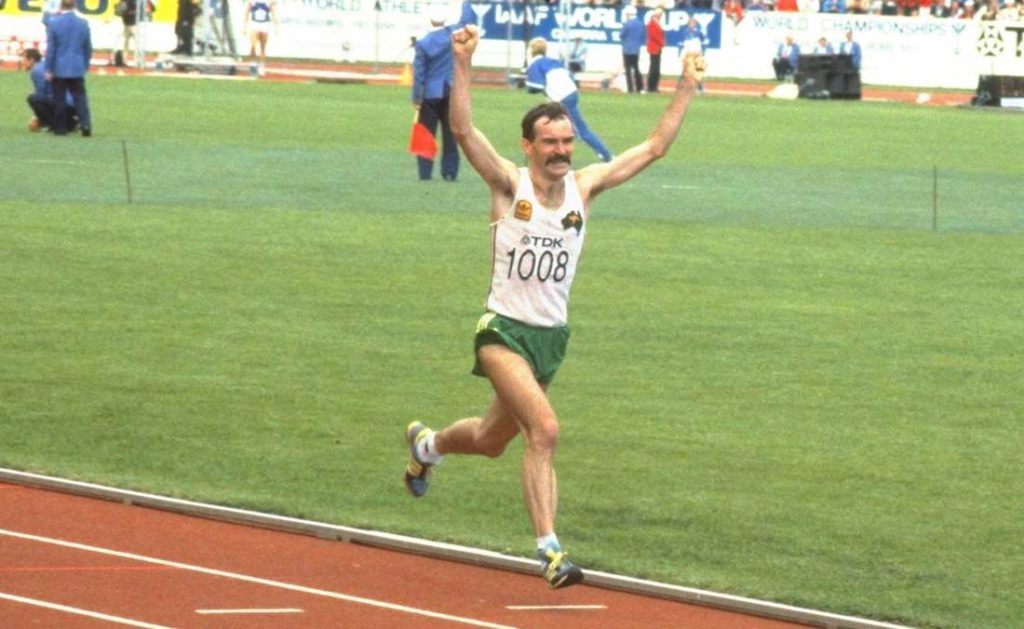
N.M. Do you think you developed your coaching ideas watching Deek come through?
C.W. Yes, he helped. I learnt a lot from Deek and ‘Clo’. My natural inclination is to be aggressive and ‘Clo’ tempered that a bit.
N.M. You started coaching while still competing. Who were your early athletes?
C.W. A few athletes you may not know – Bob Walczak who was an Australian Steeple-Chase Champion, Andy Hill who won the National 5 km., a guy called Roger Hollis who was a good schoolboy athlete. Then I had Paul Grinsted who made the Commonwealth Games Team so he was probably my best early athlete. At the Nationals in 1975 Bob won the steeple, Andy won the 5 k . and I won the 10 k. so that was pretty satisfying.
N.M. Another success from ‘group training’?
C.W. Yeah, certainly. It was terrific. Having a good group has a very positive effect on everybody.
N.M. Your memories of the Moscow Olympics. I understand that you were going to spend a considerable time training at Falls Creek in the lead-up to the Games but were forced to head home as almost the athlete’s spokesman when there was a chance that the boycott might happen?
C.W. I was up here for three months all up but I was back and forth a fair bit. It was one of those things that wasn’t too good at the time and I’m pretty pleased that Australia has had a continuous run at the Olympics. I played a part but people like Phil Coles and Clarkey were heroes in our minds because they stuck to their guns and backed us to the hilt.
N.M. Your own best ever performance?
C.W. Oh, making the Olympic 10 000 metre final in 1976 without a doubt. My San Francisco “Bay to Breakers” win was pretty good too because I started about 40 – 50 seconds behind the others (Ed. Chris was still in his track-suit when the gun went off and was forced to quickly strip off, then chase the leaders. He threw his track-suit to a woman in the crowd and asked her to take it to the finish line. When asked how she would recognise him in such a large crowd he confidently replied, “Don’t worry, I’ll win it!” Amazingly, the track-suit was waiting for him at the finish line!) I’m also, pretty happy with my best time of 17.33 for Sandown. That course is time tested and you know you’re a pretty good runner when you record 17.33 at Sandown.
N.M. And the Sandown Course is slighty different now.
C.W. Yes. It’s slightly quicker – about 4 seconds. But Mona is clearly the fastest there with his 17.16. But then there is a group made up of Clarkey, Deek, Troopy, Paynter and myself all in the 17.30 zone.
N.M. It would be interesting if Craig Mottram had a shot at it.
C.W. Yes. I would love to see him have a go at it. He’s the only guy I could see going close to Mona’s record. I also reckon that a fit Michael Power would run quick there.
N.M. Talking about Craig, you must have been impressed with his 3.35 over 1500 metres at the Grand Prix Final then ten weeks later winning the Zatopek?
C.W. He’s just a fantastic talent but I also reckon that he’s got a really good head for an athlete. Some athletes make statements that they come to regret but he just never seems to say the wrong thing. I think that he’s got a bit of Deek and Mona in him – that ‘champion quality’ that’s hard to put your finger on. They just have a touch of self- assuredness and arrogance but at the same time a touch of humbleness.
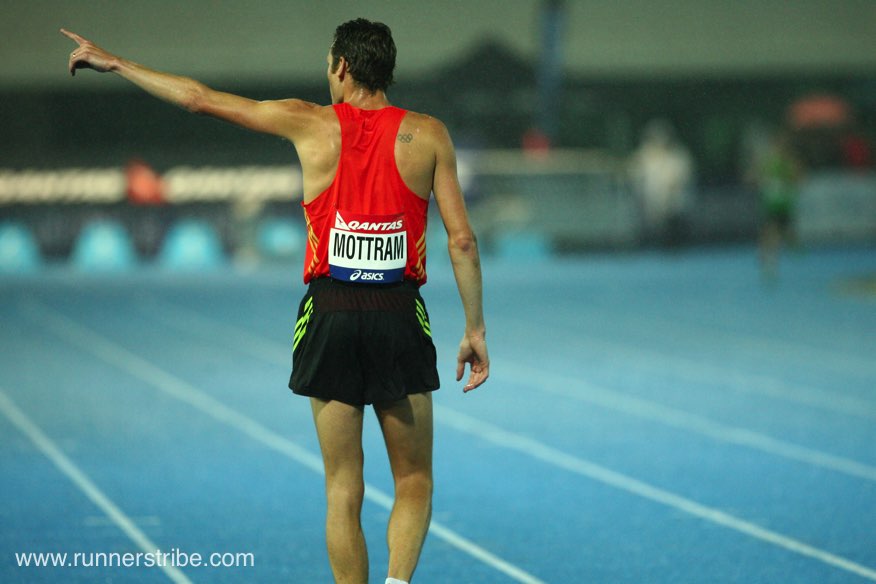
N.M. What do you think will eventually be his best distance?
C.W. Geeh, I’ve given up wondering. He looks so good in the long stuff as well as the short stuff. He looks good at everything. A year ago I would have said the five but now having seen him race over a variety of distances I’m confused – I just reckon he’s a good runner.
N.M. Like you calling Troopy a ‘distance runner’ instead of a marathoner?
C.W. Yes.
N.M. Your Training System. How did it evolve?
C.W. Over a fair time. Working with ‘Clo’ (Pat Clohessy) in 1976 / 77 I learnt a lot, especially the ‘good rolling hour’ run. Up until then I was thrashing myself in training a bit. The ‘quarters’ I just accidently came across those. I like about 15 minutes intensity on the track and about 20 minutes with fartlek so that’s how those sessions gradually evolved. And I just loved running long because I knew it was doing me the world of good. If you run long consistently you know you’re going to be fit. So, it was a bit of Clo, a bit of trial and error, a bit of accidental stuff and a bit of reading and seeing all sorts of people, regardless of ability, improve.
N.M. And it’s very hard to improve if you’re injured.
C.W. Avoiding injury is the most critical factor. The number of people who have promising careers just fall apart through injury is extraordinary. I’ve seen so many talented athletes not reach their potential through injuries – people like Gerard Barrett, Julian Paynter, Jason Agosta, the list could go on and on. Getting the balance correct where you’re training quite hard but not so hard that you’re injured is so difficult for a lot of athletes to learn. That’s where Mona and Deek and Kerryn (McCann) have an advantage because they were and are able to read their own bodies really well.
N.M. You were talking the other day about rest instead of cross-training for injuries. Could you please expand on that?
C.W. I reckon that two of the best physios in Victoria are Anne Lord and Peter Howley because they propose rest, if needed. No one else seems to tell an athlete to rest because they have this concept of ‘managing the injury’ and that can work sometimes but with distance running you’re on the edge all the time and sometimes you just need to take some time off. So often you see athletes turn a month injury into a six month injury because they don’t take the required rest. But it’s hard to take time off. I know, I’ve found it hard myself – I hated resting. If you’re only going to have ten days off I don’t think that cross-training is worth it. However, if you’re in for a long term stress fracture, for example, I think you’ve got to do a bit, even if it’s only for your own peace of mind. But the problem then is that you come back aerobically fit, but way ahead of where your body is at. I’m actually a big fan of walking for cross-training, especially for lower leg problems like achilles and calf injuries. One of the things I did with Suzie Power when she had an achilles problem was to get her to walk quite briskly. That way you don’t have all the punishment caused by gravity but you do have the blood flow to the injured area.
N.M. Your own running now. What training do you do?
C.W. Basically, bugger all! I run long on Sunday – I still do my hour and 40. On Saturday I try to do an hour and the rest of the time I fit in a run when I can but with work, that’s not too often. I work close to the Tan so I try to sneak over for a run.
N.M. Have you kept a tally of how many circuits of the Tan you have completed?
C.W. No, but it would be lots! I love the Tan and never get sick of running there.
N.M. Mona. What made him so great?
C.W. The fact that he’s just learnt to read his body so well and he, like Deek, was able to put training together, year after year, that others could not do. Both Mona and Deek also took the pressure off themselves; they know they’re bloody good. I suppose you could say that both Mona and Deek were privately arrogant but publically humble which I think is a great way to be. Mona also is very intelligent. And don’t forget Mona was a great athlete. Even as a kid he showed that he had great potential that many people did not see at the time.
N.M. Do you think that most of the great distance runners tend to have a certain personality – almost understated, Type B personalities?
C.W. They’re better if they’re more relaxed but it doesn’t mean that you can’t be good if you’re a bit of a ‘bull at the gate’ type but I think it would be harder. I wasn’t a super-relaxed sort of athlete. Just watching Deek and Mona from close quarters over the years, their capacity to relax and not let things rattle them was quite extraordinary. Kerryn is much the same – everyone around them could be losing their marbles and Mona and Deek and Kerryn would remain super calm and level-headed.
N.M. Apart from when Melbourne plays Essendon, have you ever had a disagreement with Mona?
C.W. Geeh, we don’t disagree on much, maybe on some music. We’ve just got on and we’re really good mates. In fact, we’ve been good mates for 20 odd years. And during the last ten years he knew what he was doing. Once a year we’d sit down to discuss the plan and he’d just do it. But he was also really good if he had a problem because he’d call straight away. With Mona you could always rely on him to be doing the right thing. He just never did anything stupid.
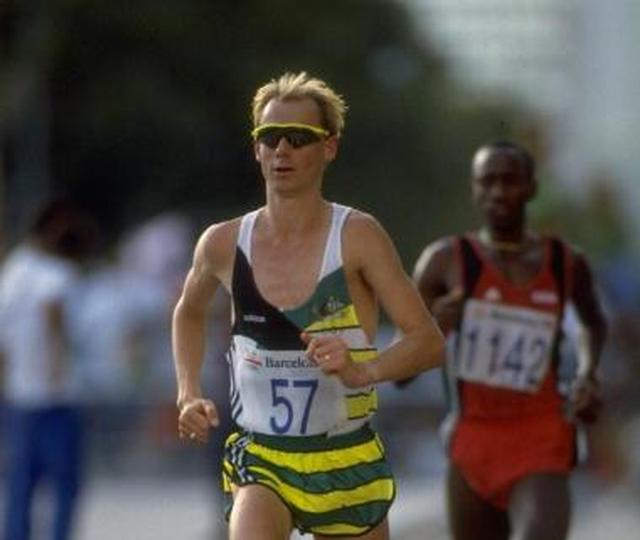
N.M. I’ve read in a running magazine where you stated that after Barcelona, where Mona had a bad marathon, that he found it hard to run himself right out – that he was only using up 99% of his potential? Can world-class marathoners go to the bottom of the well only so many times?
C.W. The marathon is such a tough event that I’m sure the mind and maybe the body says ‘no’ after a while. Most marathoners get slowly burnt through all the racing and end up running a little scared of the event, even if it’s just a touch. Funnily enough, I reckon one of Mona’s worst races ever is the Sydney Olympic Marathon. I think that he went into that race so determined to run a good, honest race that he under-estimated what he could have achieved. I’m absolutely convinced that if he had run the first half like Troopy did, and had given it a real ‘burl’, then he would have run a better race. He might have ended up 20th in Sydney but I reckon he would have run a better race.
N.M. How bad was his achilles in the lead-up to Sydney?
C.W He had a few problems but no worse than a lot of athletes and he certainly was able to manage it. His best effort by far was at the Commonwealth Games in 98. He was in great trouble and his 10 000 metres was a great run. He used all his nous and his rhythm to win that bronze medal. He shouldn’t have won a medal there because he was the most injured he has ever been in his whole career but he was terrific and finished third.
N.M. You’re a big one for training diaries. When I was talking to Kerryn the other day she mentioned that the first thing you did when you began coaching her was look at her diary. Also, yesterday you had a look through Troopy’s training diary before offering some advice.
C.W I think you can learn so much from a training diary and many people don’t keep a good enough record. I reckon that the very act of writing things down in a bit of detail can be so helpful. Mona and Deek were terrific diary keepers. In fact, Mona’s diary is great reading. I’ve kept a running diary from the moment
I’ve started running. I think it’s great when you’re leading into a race to have a look back and see all the completed sessions so you can say, “I’ve done all the work, I’m super fit and I’m ready to run well!” It’s just great psychology and offers excellent positive re-inforcement. It also has the effect of keeping your nose to the grind-stone. Tim O’Shaughnessy once said that he never needed a diary when training with me because every week was exactly the same. Obviously, I don’t agree with him.
N.M. Using his thinking you could photo-copy one week 52 times and there’s your year’s training diary.
C.W. Yes, it would certainly save time.
N.M. Australian distance running at the moment – are we heading in the right direction?
C.W. I think that we have easily as many talented athletes as we’ve had in the past at the top end with Mottram and Willis (now Johnson) and Clarke and the Powers. They’re all super-talented. However, unlike 20 – 30 years ago, we don’t have the numbers behind them. We’re awfully thin in the next group. Up until Christmas our fastest male 5000 metre runner was Mottram at the end of the Zatopek 10 000 metres. I would say that we’ve not been in that situation since the early 70’s when Clarke retired. We will always produce terrific athletes but I am worried about the depth. But things come and go.
N.M. A couple of months ago a few ex-athletes and so called experts said that the current generation don’t train hard enough or smart enough to reach world standards. Your comments on that?
C.W. I don’t agree with that statement across the board. However, some of our middle-distance runners certainly don’t train smart enough – I reckon they train hard enough. I laugh when I see Mottram running 3.35, then he’s up here at Falls Creek doing all this stuff. I can’t understand when some people then ask, “why is he running so fast?” Well, he’s strong! And he’s our best example at the moment – you can be strong and fast. You only had to watch him run the Cross-Country Trial in Ballarat last year off training at Falls Creek. He was so strong, he was cruising! A lot of athletes get distracted by short term gains and don’t get strong enough. I reckon you’ve got to be fit to train. A lot of people train before they’re fit and they just disappear or get injured. A lot of our 800 / 1500 metre runners have been distracted by the argument about quality training versus being really fit. Well, it’s a false argument because you need both because you can’t do the quality without being fit.
N.M. On the world scene, which of the current athletes do you really admire?
C.W. I just love watching El Guerrouj. I think he’s just brilliant. I thought Takahashi’s run at the Olympics was one of the most exciting runs I’ve ever seen – I think she’s was just stunning.
N.M. What about Gebrselassie?
C.W. Funnily enough, I’ve always preferred Tergat to Gebrselassie which says more about my racing prejudice than anything. But hell, Gebrselassie – what an athlete!
Sonia and Szabo are great athletes that I admire. I really like Paula Radcliffe even though I think she’s a stupid racer. But I just love the way she puts it on the line – I think that’s really admirable. I’d love to get her in a corner one day and say, “hey, do it this way!” Brendan Foster taught the world how to properly race a ‘kick down’ and he lives in her own country.
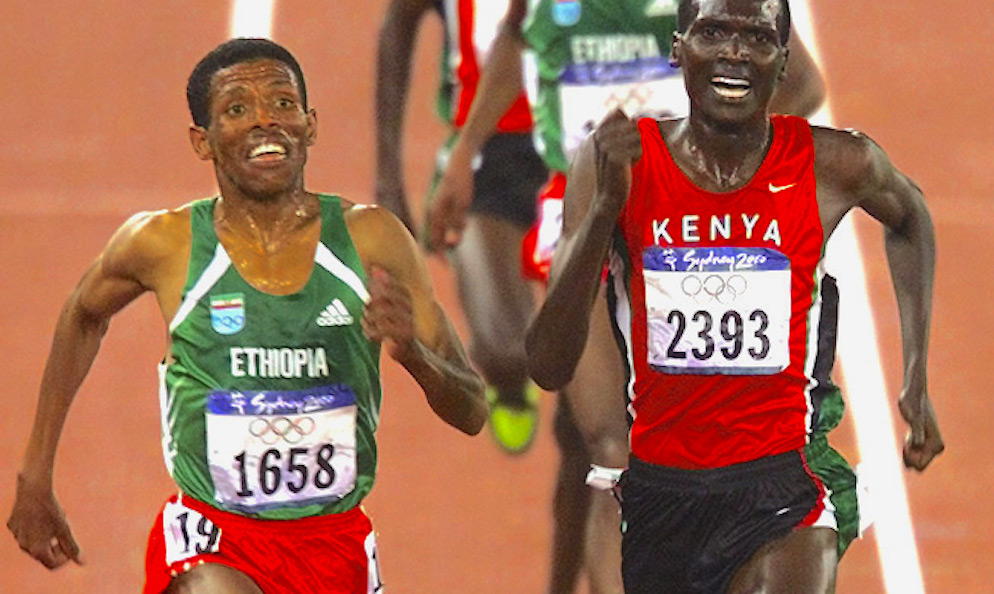
N.M. What would you suggest she do in say a 5 km. race on the track?
C.W Well, it depends on how the race unfolds but basically there are some rules and they’re pretty fundamental: the slower it is, the harder the kick-down, the later you go, the harder the kick-down. At the moment she does all the work, the ones behind her get an even sit, then they crunch her. But she’s bloody good, a terrific athlete! She was a lot closer at Edmonton, so perhaps she’s learning.
I’ve also got a lot of time for Tulu. I think she’s under-rated but a fantastic athlete.
N.M. One last hypothetical question. If you had the choice of Glenhuntly winning Sandown in record time, or Essendon winning the A.F.L. Premiership or Australia winning a distance running medal at the Commonwealth Games, World Championships or the Olympic Games, what would you choose?
C.W The distance medal easily. I would get so much pleasure out of that! Funnily enough, I had nothing to do with Lloydy winning the 5000 metres at the Commonwealth Games in 1990 but it was the most exciting moment of my life when he caught Ngugi on the line. I would just love to see an Australian win a distance medal, and we’ve seen it with Lisa Ondieki and Lloydy. However, it would be a very close call between the other two choices.
N.M. Thanks very much for your time, Chris.
C.W No problems, Neil.





